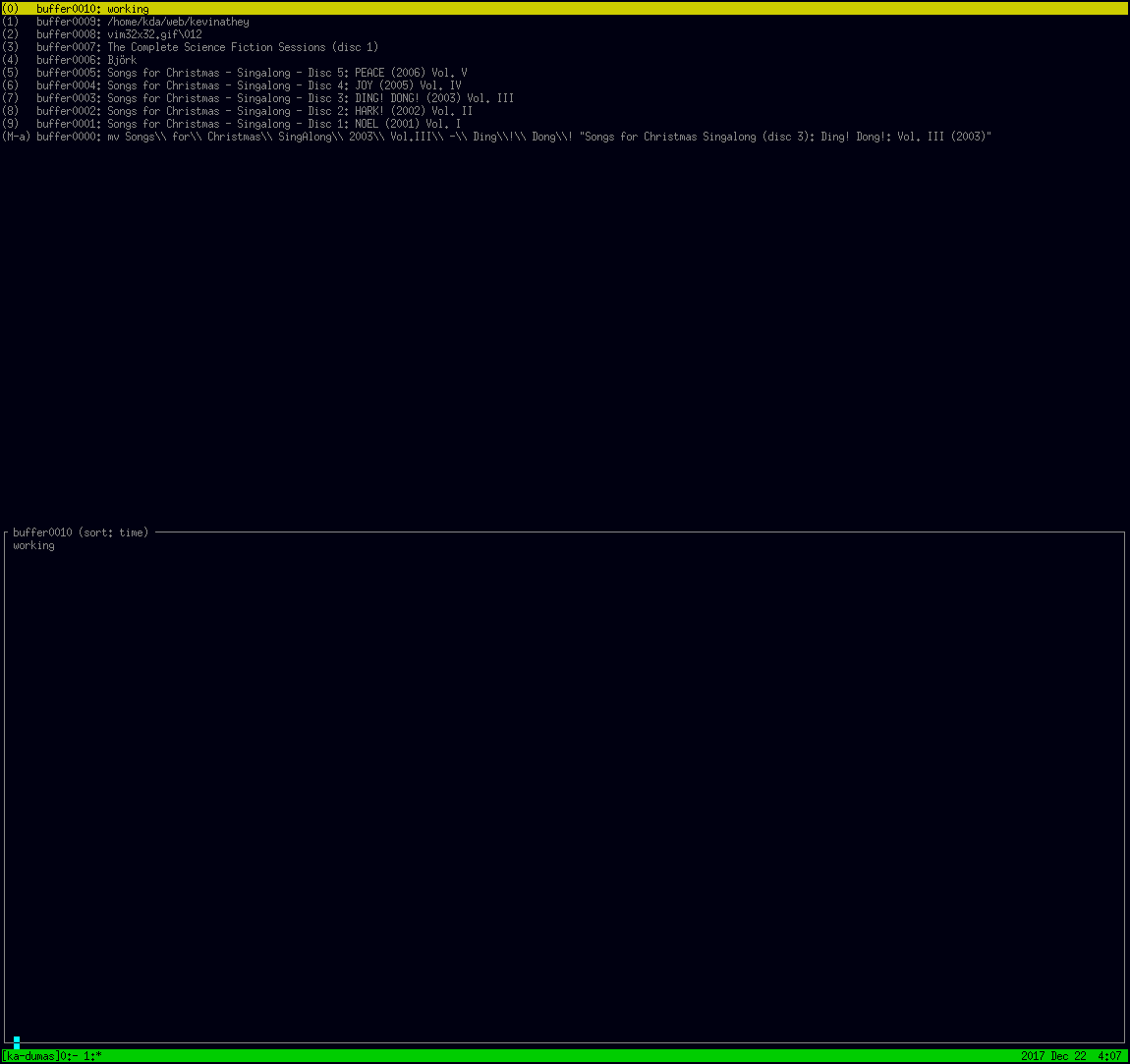

You can hide some of the default gvim ToolBar buttons by adding lines like the following to your vimrc: Nnoremap :if &go=~#'r'set go-=relseset go+=rendif Nnoremap :if &go=~#'T'set go-=Telseset go+=Tendif Nnoremap :if &go=~#'m'set go-=melseset go+=mendif Ctrl-F2 toggles the toolbar, and Ctrl-F3 toggles the right-hand scrollbar.

For example, press Ctrl-F1 to display the menu bar (if it is currently hidden), or to hide the menu bar (if it is currently displayed). The following mappings provide toggles to show or hide a widget. For example, enter the following command to display the menu bar ( 'go' is an abbreviation for 'guioptions'):Ī more extreme version of removing the menu bar is the following, which does not source the menu script ( :help 'go-M' has more information): While using gvim, you can easily display a widget. :set guioptions-=L "remove left-hand scroll bar :set guioptions-=r "remove right-hand scroll bar Episode 33 - Fugitive.If you do not want to see a widget, put whichever of the following you like in your vimrc:.Episode 32 - Fugitive.vim - working with the git index.
#MACVIM CHANGE BUFFERS HOW TO#
Check out episodes 32 and 33 for a detailed demonstration of how to use these commands. a new feature has been added, that allows for displaying text in between the buffer text. If you want to resolve the differences between files, you can do so using the :diffget and :diffput commands. powerful search and replace integrates with many tools. In diff mode, Vim provides two handy motions for getting around: c jump back and forward between changes. This technique would work just as well if neither buffer had been saved to disk, which makes it pretty flexible. In the video demonstration, the buffer on the left corresponds to a file on my local filesystem, while the buffer on the right has no associated file. There’s no need to write the text to a temporary file. The nice thing about this technique is that we can use an unnamed buffer. We can turn diff mode off just as easily, by running: :windo diffoff
#MACVIM CHANGE BUFFERS WINDOWS#
If we have two split windows containing buffers that we want to compare, then we can diff them by running: :windo diffthis The :diffthis command allows us to compare two (or more) buffers that are open in an existing Vim session.
in MacVim to :RustRun pre-filled with the last args nnoremapI have no further use for the temporary file, so I’d have to clean up afterwards by removing it. I’m not keen on this workflow for a couple of reasons. We can now compare the two drafts by running: vimdiff 45-shownotes-draft.md 45-shownotes-latest.md

The pbpaste command is specific to os x, but similar commands are available on other systems. I did so using my system clipboard, then running the command: pbpaste > 45-shownotes-latest.md Before I could use vimdiff, I had to copy the text from that textarea into a local file. In the video demonstration, one of the files that I wanted to compare was on my local filesystem, while the other file was in a textarea on a webpage.

vimdiff launches Vim, creates a window for each specified file, and highlights the differences between them. Preserve swapHelpful Please support me on Patreon. We can call vimdiff from the command line giving it two or more filenames. MacVim / Vim retain content of all buffers (like Sublime Text).


 0 kommentar(er)
0 kommentar(er)
